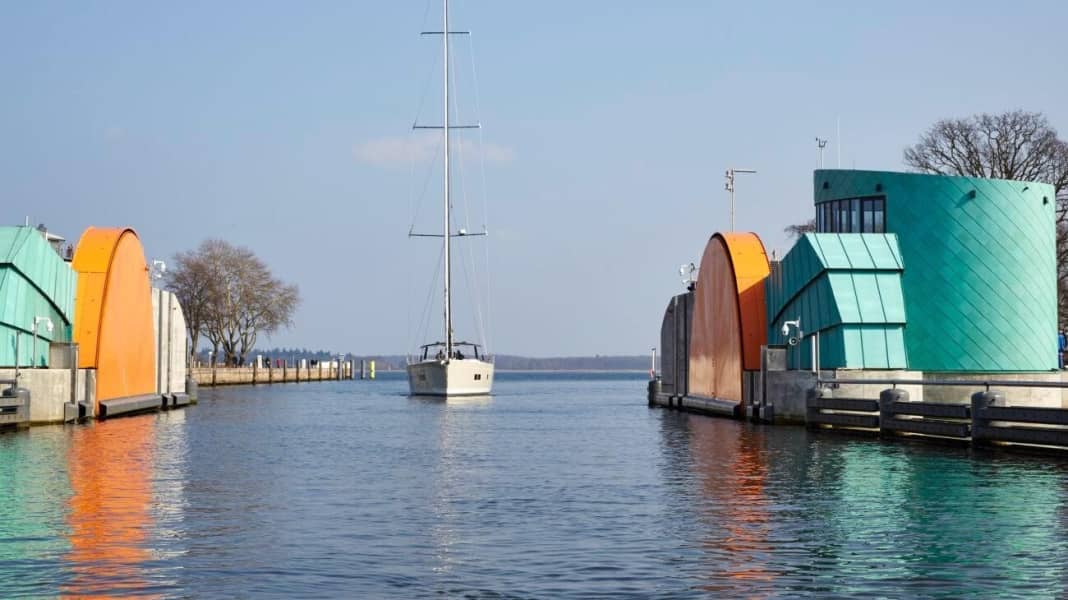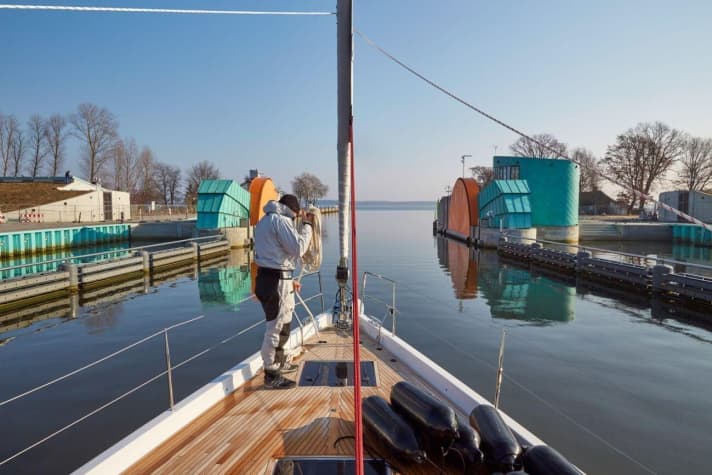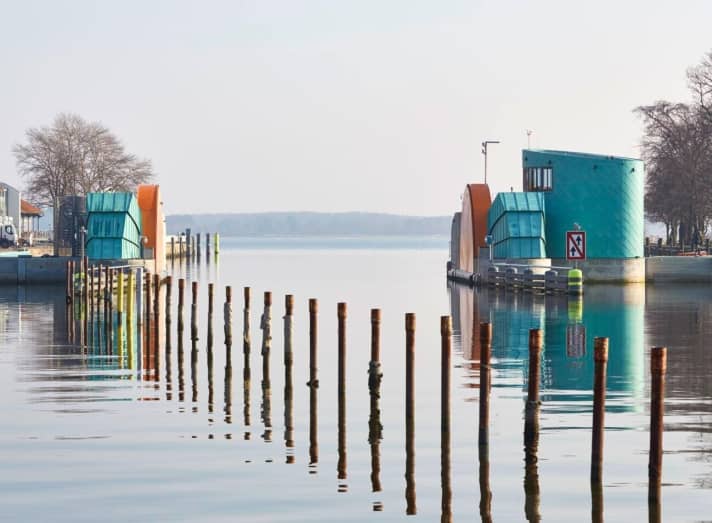

The barrage, which was built at the mouth of the River Ryck into the Greifswald Bodden, was put into operation today. In future, it will protect Greifswald city centre and the surrounding areas from flooding. This may have adverse effects for sailors - the harbour in the Wieck district, which is located directly at the mouth of the river, can no longer be used by boats if the barrage is closed. There are no comparable moorings on the seaward side.
Five years have passed since construction work began on the barrage. According to the Mecklenburg-Vorpommern Ministry of the Environment, it is the "most extensive and technically demanding coastal protection project in the state to date". The realisation of the project cost 32 million euros, four million euros more than planned. In future, the barrage will be able to withstand water up to a height of 3.05 metres above sea level during storm surges.

Greifswald is more at risk of flooding than any other town in Mecklenburg-Vorpommern. In particular, when the wind pushes the water into the Bodden from the north-east, the Dänische Wiek can quickly flood. The most devastating storm surge hit the town in 1872 with a water level of 2.64 metres above sea level - Wieck was almost completely destroyed at the time.
However, apart from for test purposes, the barrier will only be closed in future if water levels are expected to exceed 1.15 metres above sea level, which is only the case once a year on average. If the forecast indicates an even greater rise, the gate will be locked at a water level of around 0.75 metres above sea level. Sailors can use the Website of the barrage and then have to switch to neighbouring ports if necessary.
The inauguration of the barrage has also resulted in new regulations for the Hanseyachts shipyard. As the passage depth set by the Stralsund Waterways and Shipping Authority (WSA) is only 2.80 metres due to the silting up of the Ryck, larger newbuilds from the yacht manufacturer may only pass through the river with a special permit. The sailing training ship "Greif" is even more directly affected. With a draught of 3.60 metres, it will no longer be able to reach its home port reliably from now on, the WSA announced.
Originally, a passage depth of just under four metres was planned for the barrage. However, this was significantly reduced by flushing nozzles installed on the bottom to prevent sediment from settling. The city of Greifswald is therefore now planning to build a new berth for the "Greif" on the seaward side of the barrage.
